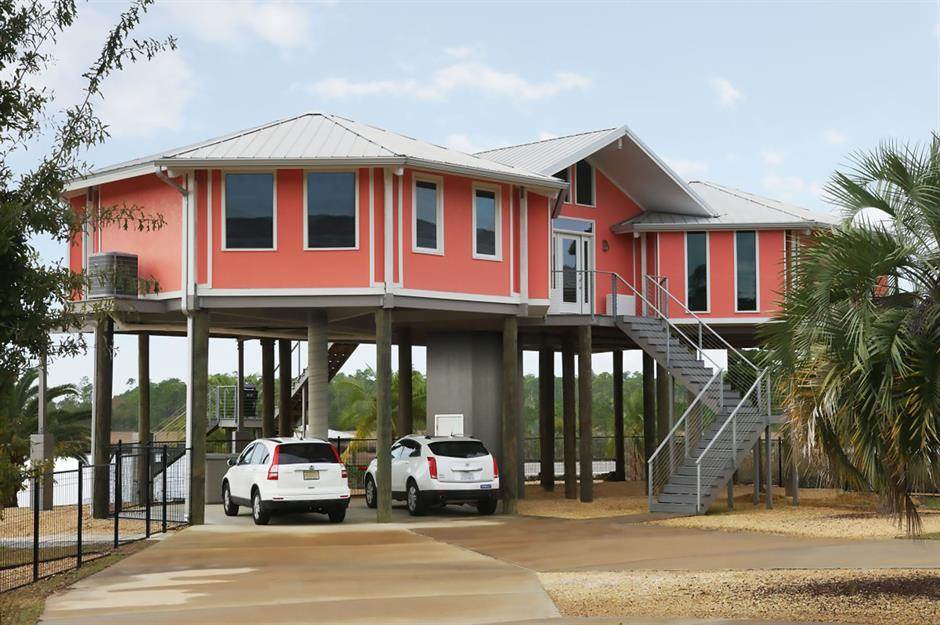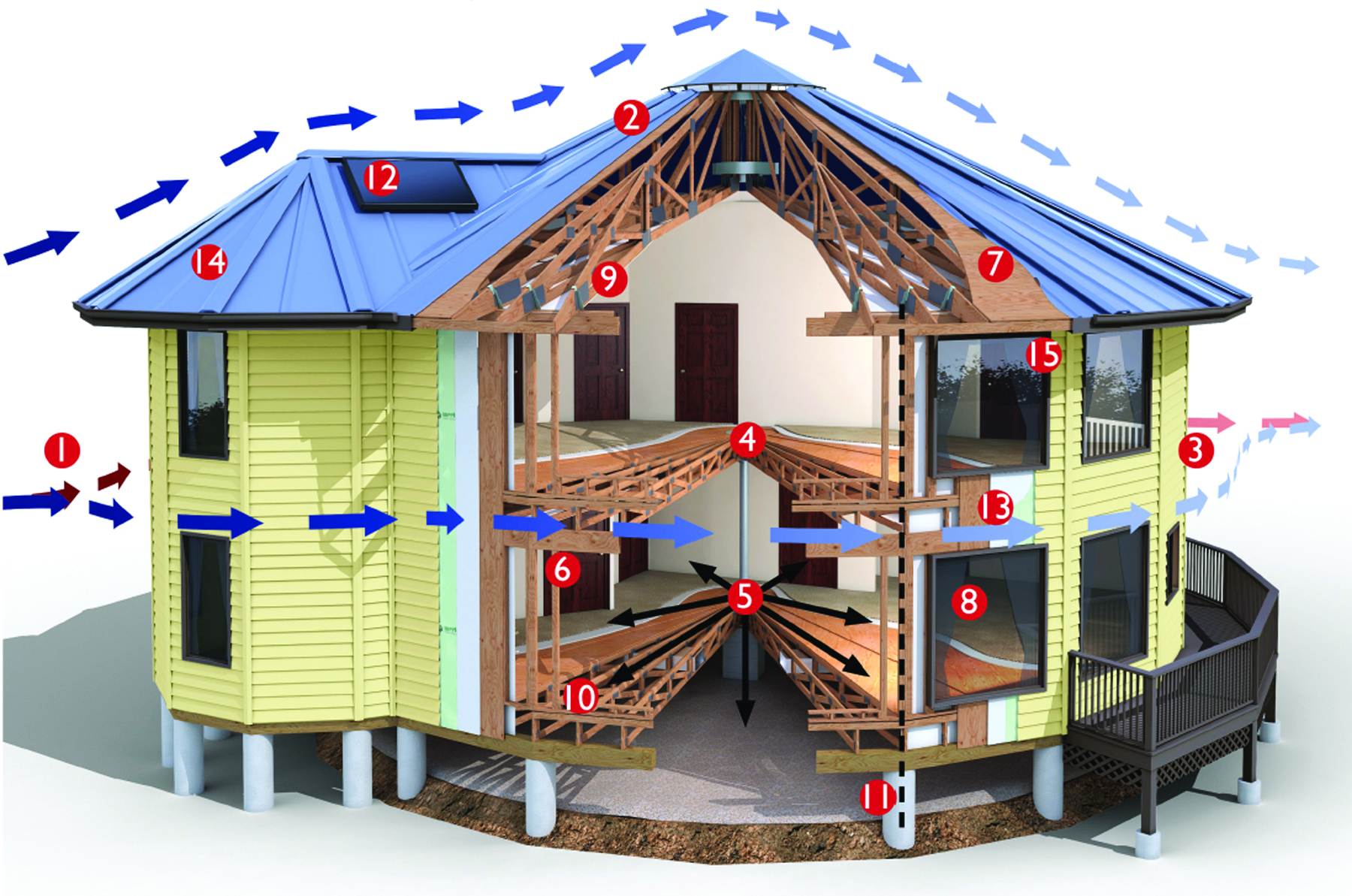Alright folks, let’s talk about one of Mother Nature’s most fearsome forces: hurricanes. We all know they can unleash tremendous havoc, but have you ever wondered what makes a house truly hurricane-proof? Well, today we’re diving into the world of architectural innovation as we explore the quest for the best hurricane-proof house. From reinforced concrete structures to cutting-edge designs, buckle up and join us as we navigate through the storm of possibilities. Get ready to be blown away!
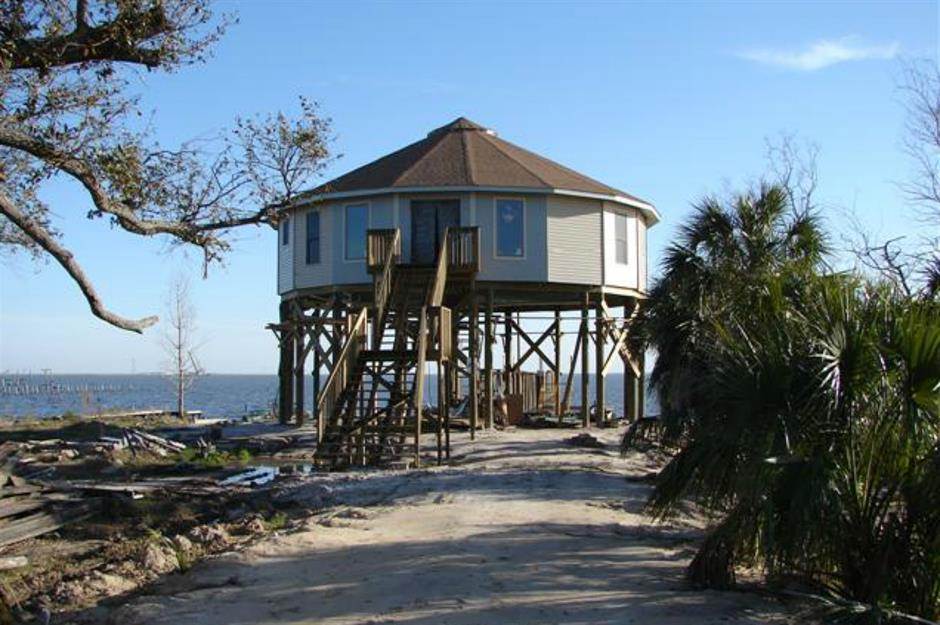
Factors to Consider
When it comes to designing a hurricane-proof house, there are several factors that need to be considered. These factors include the location of the house, its design, the materials used in its construction, the construction techniques employed, and the overall cost of building and maintaining such a structure. By carefully considering these factors, homeowners can ensure that their homes are better equipped to withstand the destructive forces of hurricanes and protect themselves and their loved ones.
Location
The location of a house plays a crucial role in determining its susceptibility to hurricane damage. Homeowners in hurricane-prone regions need to be particularly cautious and take necessary precautions when building their homes. Such regions often experience strong winds, heavy rainfall, and storm surge, all of which can cause significant damage to buildings. Additionally, the elevation of the land where the house is situated and its proximity to water bodies can also affect its vulnerability to hurricanes.
Hurricane-Prone Regions
Living in a hurricane-prone region requires homeowners to adopt specific building practices that can help mitigate the risk of damage caused by hurricanes. These regions are characterized by higher wind speeds, which necessitate stronger and more durable construction methods. Building codes in these areas often specify guidelines and regulations that must be followed to ensure the structural integrity of homes.
Elevation
The elevation of a house is crucial in determining its vulnerability to storm surge, a common danger during hurricanes. Homes located in low-lying areas are at higher risk of flooding, as storm surge can cause water levels to rise significantly. By building houses on higher ground or considering elevating the structure, homeowners can minimize the risk of flood damage.
Proximity to Water Bodies
Homes located near water bodies, such as the ocean, lakes, or rivers, are more susceptible to hurricane damage. The combination of high winds and rising waters can lead to extensive destruction. For homeowners in these areas, it is essential to consider additional protective measures, such as reinforced materials and appropriate construction techniques, to withstand the forces of hurricanes.
Design
The design of a hurricane-proof house plays a significant role in its ability to withstand strong winds and other severe weather conditions. By incorporating specific design elements, homeowners can make their homes more resistant to damage caused by hurricanes.
Single-Story vs. Multi-Story
When it comes to the design of a hurricane-proof house, the choice between a single-story or multi-story structure is an important consideration. Multi-story houses tend to be more susceptible to wind damage due to their larger profile. On the other hand, single-story houses offer a lower wind resistance and are generally considered to be a safer option in hurricane-prone areas.
Roof Shape
The shape of the roof can greatly impact a house’s ability to withstand hurricane forces. A sloping roof with a gentle slope is generally recommended for hurricane-proof houses. This design allows wind to pass over the roof more effectively, reducing the risk of lift and damage. Flat or hipped roofs are not recommended, as they are more prone to wind uplift and can be easily damaged during a hurricane.
Window Placement
The placement of windows in a hurricane-proof house is crucial for protecting the structure and its occupants. Windows should be strategically located away from the path of strong winds to minimize the risk of breakage and prevent the entry of wind and rain into the house. Impact-resistant windows with laminated or reinforced glass are recommended to withstand the impact of flying debris during a hurricane.
Open Floor Plans
Open floor plans are gaining popularity not only for their aesthetic appeal but also for their potential to withstand hurricane forces. The open layout allows wind to flow through the house more freely, reducing the risk of structural damage. Additionally, open floor plans provide more flexibility in terms of furniture placement and enhance the overall sense of spaciousness.
Wind-Resistant Doors
Choosing the right doors for a hurricane-proof house is essential in preventing wind damage and maintaining the structural integrity of the building. Impact-resistant doors made from reinforced materials, such as steel or fiberglass, are highly recommended. These doors are designed to withstand high wind loads and provide an extra layer of protection against flying debris.
Materials
The choice of materials used in the construction of a hurricane-proof house is vital in ensuring its durability and resistance to hurricane forces. By selecting the right materials, homeowners can enhance the strength and structural integrity of their homes.
Reinforced Concrete
Reinforced concrete is widely regarded as one of the most suitable materials for hurricane-resistant construction. It offers excellent strength, durability, and resistance to wind and impact. Reinforced concrete walls, columns, and foundations provide a strong and resilient structure that can withstand the forces exerted by hurricanes.
Impact-Resistant Glass
The windows and doors of a hurricane-proof house need to be equipped with impact-resistant glass to protect against flying debris. Impact-resistant glass consists of multiple layers of glass with a strong interlayer that holds the glass together even when shattered. This reduces the risk of glass breakage and maintains the structural integrity of the house during a hurricane.
Steel
Steel is a versatile material that offers exceptional strength and durability. It is commonly used in hurricane-proof houses for structural elements such as beams, columns, and framing. The use of steel in construction provides added resistance to wind forces and ensures the stability of the building.
Fiber Cement Siding
Fiber cement siding is a popular choice for hurricane-proof houses due to its durability and resistance to wind damage. It is composed of cement, sand, and cellulose fibers, making it highly resistant to rot, insects, and fire. Fiber cement siding is also known for its impact resistance, making it suitable for areas prone to hurricanes.
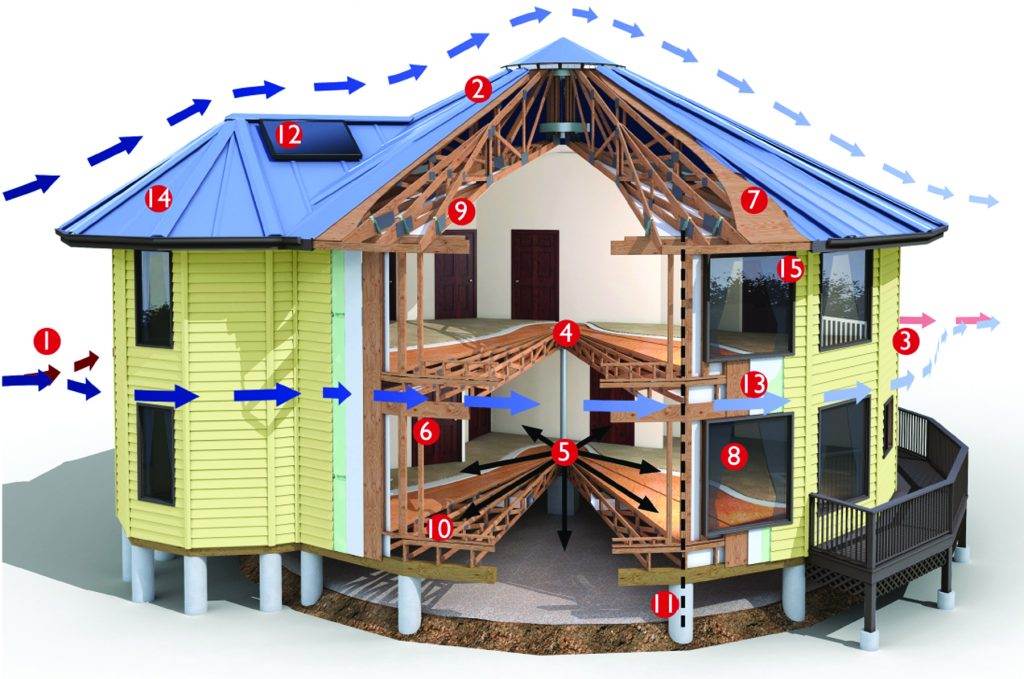
This image is property of x7e6w2g4.stackpathcdn.com.
Construction Techniques
The construction techniques employed during the building process can significantly influence the strength and resilience of a hurricane-proof house. By implementing specific construction techniques, homeowners can enhance the structural integrity of their homes and improve their ability to withstand hurricane forces.
Solid Construction
Building a hurricane-proof house requires solid and robust construction methods. Walls, foundations, and roofs should be constructed using reinforced materials and techniques to provide strength and durability. By ensuring the use of high-quality materials and proper construction practices, homeowners can create a solid structure capable of withstanding the forces exerted by hurricanes.
Reinforced Joints
The joints between structural elements are critical weak points in a building’s resistance to hurricane forces. Reinforcing these joints with metal connectors, fasteners, or adhesives can significantly enhance the building’s ability to withstand wind loads. This ensures that the different components of the structure remain securely connected during a hurricane.
Foundation Anchoring
Properly anchoring the foundation of a hurricane-proof house is essential to prevent it from being uplifted or shifted during a storm. This can be achieved by using deep concrete footings, steel reinforcements, or specialized anchor systems. Anchoring the foundation securely to the ground enhances the stability of the entire structure and reduces the risk of damage.
Roof Strapping
Securing the roof to the walls of a hurricane-proof house is crucial in preventing the roof from being lifted or blown off during a hurricane. Roof strapping involves attaching metal straps or connectors from the roof framing to the wall studs or rafters. These straps provide additional strength and stability, reducing the risk of roof failure.
Impact-Resistant Roofing
Using impact-resistant roofing materials can help protect a house from damage caused by flying debris during a hurricane. Metal roofs, concrete tiles, or specially designed shingles with high impact resistance are recommended. These materials are less likely to be damaged by wind-blown debris, reducing the risk of roof leaks and structural damage.
Cost
Building a hurricane-proof house often involves additional costs compared to conventional construction. However, the investment is justified by the added durability and protection against hurricane damage. It is essential for homeowners to consider the various cost implications associated with building and maintaining a hurricane-proof house.
Initial Investment
The initial investment required to build a hurricane-proof house can be higher compared to a standard home. The use of reinforced materials, impact-resistant windows, and specialized construction techniques contribute to the increased cost. However, this additional expenditure is essential in ensuring the longevity and resilience of the structure.
Insurance Premiums
Living in a hurricane-prone area typically necessitates additional insurance coverage, including windstorm and flood insurance. The cost of insurance premiums for a hurricane-proof house may be higher due to the increased protection it offers against hurricane damage. While this may result in higher insurance costs, it provides homeowners with the peace of mind of having adequate coverage in the event of a hurricane.
Maintenance and Repairs
While the initial construction cost of a hurricane-proof house may be higher, the maintenance and repair costs over the long term can be significantly lower compared to a conventional home. The durable materials and construction techniques used in hurricane-proof houses require minimal maintenance and have a longer lifespan. This can result in cost savings for homeowners in the long run.
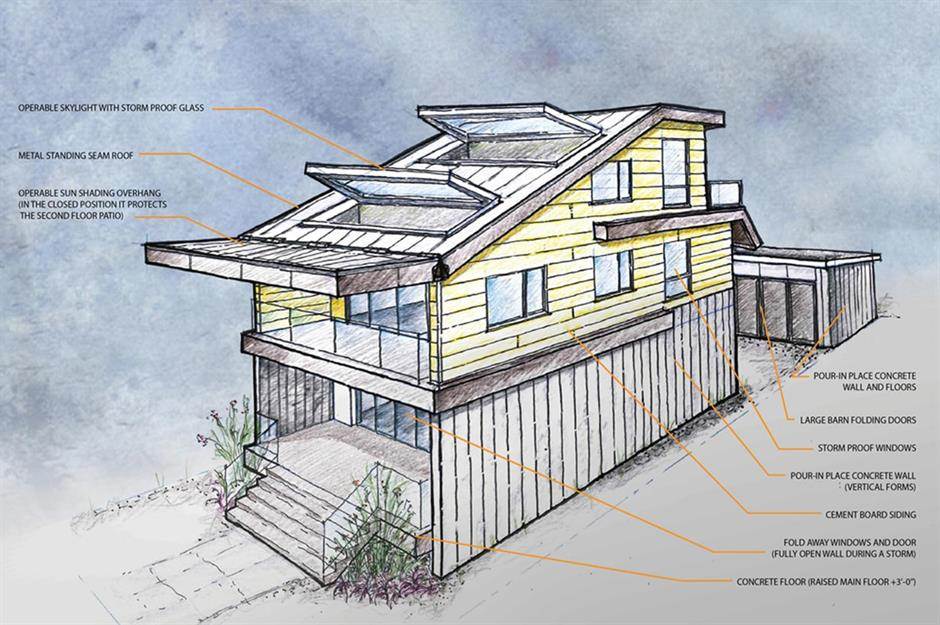
Other Considerations
In addition to the factors mentioned above, there are other considerations that homeowners should take into account when designing a hurricane-proof house. These factors include energy efficiency, sustainable features, and accessibility.
Energy Efficiency
Incorporating energy-efficient features into a hurricane-proof house can help reduce energy consumption and lower utility bills. Insulation, proper sealing of windows and doors, and the use of energy-efficient appliances and lighting can contribute to improved energy efficiency. Energy-efficient design also helps reduce the carbon footprint of the house.
Sustainable Features
Integrating sustainable features into a hurricane-proof house not only benefits the environment but also enhances its overall functionality and resilience. For example, the use of rainwater harvesting systems, solar panels, and passive heating and cooling techniques can reduce reliance on external resources and make the house more self-sustaining.
Accessibility
Designing a hurricane-proof house with accessibility in mind is important to ensure that it can be safely and comfortably inhabited by people with disabilities or mobility challenges. Incorporating wide doorways, ramps, and accessible bathrooms can make the house more inclusive and enable occupants to navigate the space with ease.
Best Hurricane Proof House Designs
Several house designs have gained recognition for their superior ability to withstand hurricane forces. These designs incorporate various features and techniques to enhance the structural integrity and resilience of the houses.
Fortified Homes
Fortified homes are specifically designed to withstand extreme weather events, including hurricanes. These houses adhere to strict building codes and incorporate reinforced materials and construction techniques. Fortified homes are typically built to exceed the minimum requirements set by local building codes, making them highly resilient to hurricane damage.
Monolithic Domes
Monolithic domes are a unique type of structure that offers exceptional strength and durability. These dome-shaped buildings are made of reinforced concrete or similar materials, providing an aerodynamic shape that allows wind to flow smoothly around the structure. Monolithic domes are known for their ability to withstand hurricane forces, making them an excellent choice for hurricane-proof houses.
Tornado-Proof Houses
While tornadoes and hurricanes are different weather phenomena, houses designed to withstand tornadoes often exhibit features that make them suitable for hurricane-prone regions as well. These features include reinforced walls, impact-resistant windows, and a strong foundation. Tornado-proof houses prioritize safety and durability, making them an ideal choice for areas prone to hurricanes.
Passive Survivable Homes
Passive survivable homes are designed to provide shelter and survival capabilities to occupants during extreme weather events. These houses are built to withstand hurricanes, earthquakes, and other disasters. Passive survivable homes often incorporate features such as reinforced concrete walls, underground or elevated structures, and independent power and water supply systems.
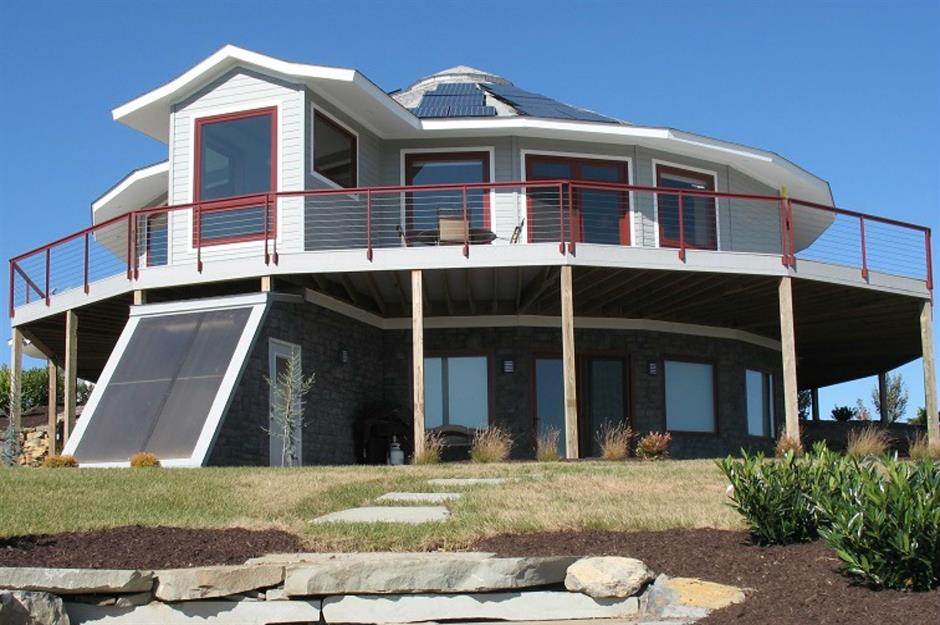
Fortified Homes
Fortified homes are designed and constructed with the sole purpose of withstanding hurricanes and other extreme weather events. These houses adhere to nationally recognized standards and building codes for hurricane resistance. Fortified homes incorporate a combination of fortified materials, construction techniques, and design features to ensure structural integrity.
Relevant Features
Fortified homes feature several design elements and construction techniques to enhance their resilience against hurricane forces. Some relevant features include reinforced concrete walls, impact-resistant windows and doors, hurricane straps, and reinforced roofs. These features work together to create a robust and durable structure that can withstand the powerful winds and flying debris associated with hurricanes.
Pros and Cons
There are several advantages to building a fortified home. The primary benefit is the enhanced protection it provides against hurricane damage. Fortified homes are designed to resist wind loads, prevent water infiltration, and minimize the risk of structural failure. Additionally, fortified homes often benefit from lower insurance premiums due to their increased resistance to hurricanes.
However, building a fortified home can be more expensive compared to conventional construction methods. The use of fortified materials, such as impact-resistant glass and reinforced concrete, can contribute to higher construction costs. Furthermore, the specialized construction techniques required for fortified homes may require additional expertise and labor, further adding to the overall cost.
Notable Examples
There are several notable examples of fortified homes that have withstood the forces of hurricanes and other extreme weather events. One such example is the “Hurricane House” in Pensacola, Florida. This home was built following fortified construction standards and survived Hurricane Ivan in 2004 without sustaining any significant damage. Another example is the “Hurricane Test House” in South Carolina, which was subjected to simulated hurricane conditions and successfully demonstrated its resilience and durability.
Passive Survivable Homes
Passive survivable homes are designed to provide a safe and habitable environment for occupants during extreme weather events, including hurricanes. These homes prioritize the survival and well-being of occupants by incorporating specific design principles and features.
Passive Design Principles
Passive survivable homes integrate various design principles to enhance their resilience and survivability during hurricanes. These principles include proper site selection, optimized building orientation, reinforced construction, and the use of durable materials. Additionally, passive survivable homes often incorporate independent power and water supply systems to ensure the availability of essential resources during and after a hurricane.
Benefits
One of the primary benefits of passive survivable homes is their ability to provide shelter and protection to occupants during a hurricane. These houses are designed to withstand high winds, resist water infiltration, and maintain structural integrity in the face of extreme weather conditions. Additionally, passive survivable homes often incorporate energy-efficient features, making them more sustainable and cost-effective in the long run.
Considerations
Designing and constructing a passive survivable home requires thoughtful planning and consideration of various factors. The choice of location, site elevation, and surrounding natural features all play a role in determining the home’s viability as a hurricane-resistant structure. Additionally, passive survivable homes often require specialized design and construction expertise to ensure they meet the necessary standards for hurricane resistance.
Notable Examples
One notable example of a passive survivable home is the “Safe Home” in Pratt City, Alabama. This home was built to withstand tornadoes and hurricanes and incorporates reinforced concrete walls, impact-resistant windows, and a reinforced safe room. The “Safe Home” demonstrated its resilience during the 2011 tornado outbreak in Alabama, protecting its occupants from the destructive forces of the tornadoes.
In conclusion, building a hurricane-proof house requires careful consideration of various factors, including location, design, materials, construction techniques, cost, and other considerations. By incorporating appropriate design elements, using fortified materials, and employing specific construction techniques, homeowners can increase the strength and resilience of their homes. While building a hurricane-proof house may involve additional costs, the investment is justified by the increased protection and peace of mind it offers. Whether it’s a fortified home, a monolithic dome, a tornado-proof house, or a passive survivable home, there are various designs and approaches available to create a hurricane-resistant structure that can withstand the destructive forces of hurricanes.
